From July 13 to Nov. 24, 2024, Lecco ’s Palazzo delle Paure hosts an exhibition exploring an extraordinary period in which Milan consolidated its role as a protagonist on the international cultural scene: the 1960s. Curated by Simona Bartolena, entitled Milano Anni ’60. From Lucio Fontana to Piero Manzoni, from Enrico Baj to Bruno Munari, produced and realized by ViDi Cultural in collaboration with the Municipality of Lecco and the Sistema Museale Urbano Lecchese, this exhibition concludes the cycle of exhibitions “Percorsi nel Novecento.” This program, conceived by the Direction of the Lecco Urban Museum System and developed by ViDi Cultural, analyzes the Italian cultural scene of the 20th century.
The exhibition presents 60 works by artists such as Lucio Fontana, Piero Manzoni, Enrico Baj, Bruno Munari, Arturo Vermi, Ugo La Pietra, Gianni Colombo, Grazia Varisco and others. These artists explore and delve into the new artistic languages and revolutionary research that emerged in Milan during this period of great creative ferment, which led to a radical change in artistic thought. Since World War II, Milan has been a vibrant cultural center, with new galleries, exhibitions, artistic groups and movements, and the publication of manifestos. Artists, in reaction to the destruction of the war, explored increasingly experimental avenues and languages suited to the new social and anthropological condition, creating a network of relationships that made Milan one of the capitals of European art.
In the 1960s, compared to the previous decade dominated by expressionist and informal codes, Milanese artists abandoned instinct and vehement gesture to adopt a more calibrated attitude. Many were inspired by the cuts of Lucio Fontana, who treated the canvas no longer as a surface but as matter; others sought to renew the idea of painting while remaining faithful to it. The exhibition opens with Lucio Fontana, a central figure and catalyst of this period, founder of the Spatialist movement, which includes artists such as Gianni Dova, Roberto Crippa and Cesare Peverelli. At the same time, the Nuclear Movement was born in Milan, created by Enrico Baj and Sergio Dangelo.
In September 1959, the first issue of Azimuth magazine, founded by Enrico Castellani and Piero Manzoni, was published. More than just a publication, Azimuth represents an “intellectual rendezvous,” a radical and international experience that promotes the overcoming of traditional painting and the emergence of new languages.
After the Azimuth experience, the exhibition documents the experiments of Gruppo T, formed by Gianni Colombo, Davide Boriani and Grazia Varisco. This group focuses on the relationship between time and space and the idea of movement in art, following in the footsteps of Bruno Munari, who had already introduced important reflections on dynamism and perception with his “Useless Machines” and “Negative-Positive.” Another significant group is the Gruppo del Cenobio, officially established in 1962. Composed of artists such as Agostino Ferrari, Ugo La Pietra, Ettore Sordini, Angelo Verga and Arturo Vermi, this group explored a new expressive-writing dimension of painting. The exhibition also devotes a section to the Botteghe di Sesto, in Sesto San Giovanni, an important center of artistic experimentation. Internationally renowned artists such as Enrico Castellani, Arturo Vermi, Turi Simeti and Agostino Bonalumi worked there. In the exhibition, a book with original works by these artists testifies to the importance of this place for the Milanese art scene.
The exhibition is accompanied by a catalog produced by Ponte43 for ViDi Cultural editions.
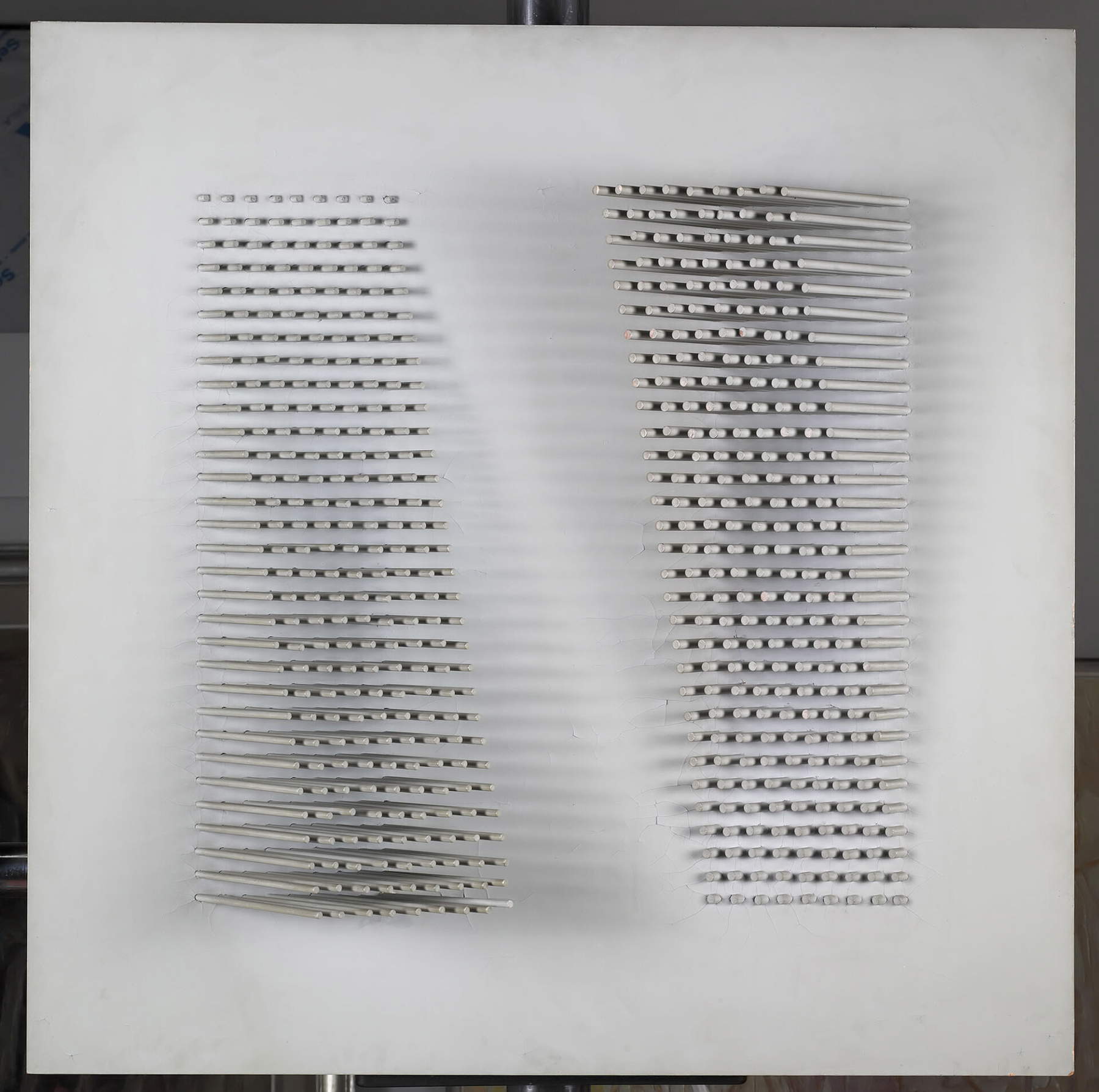
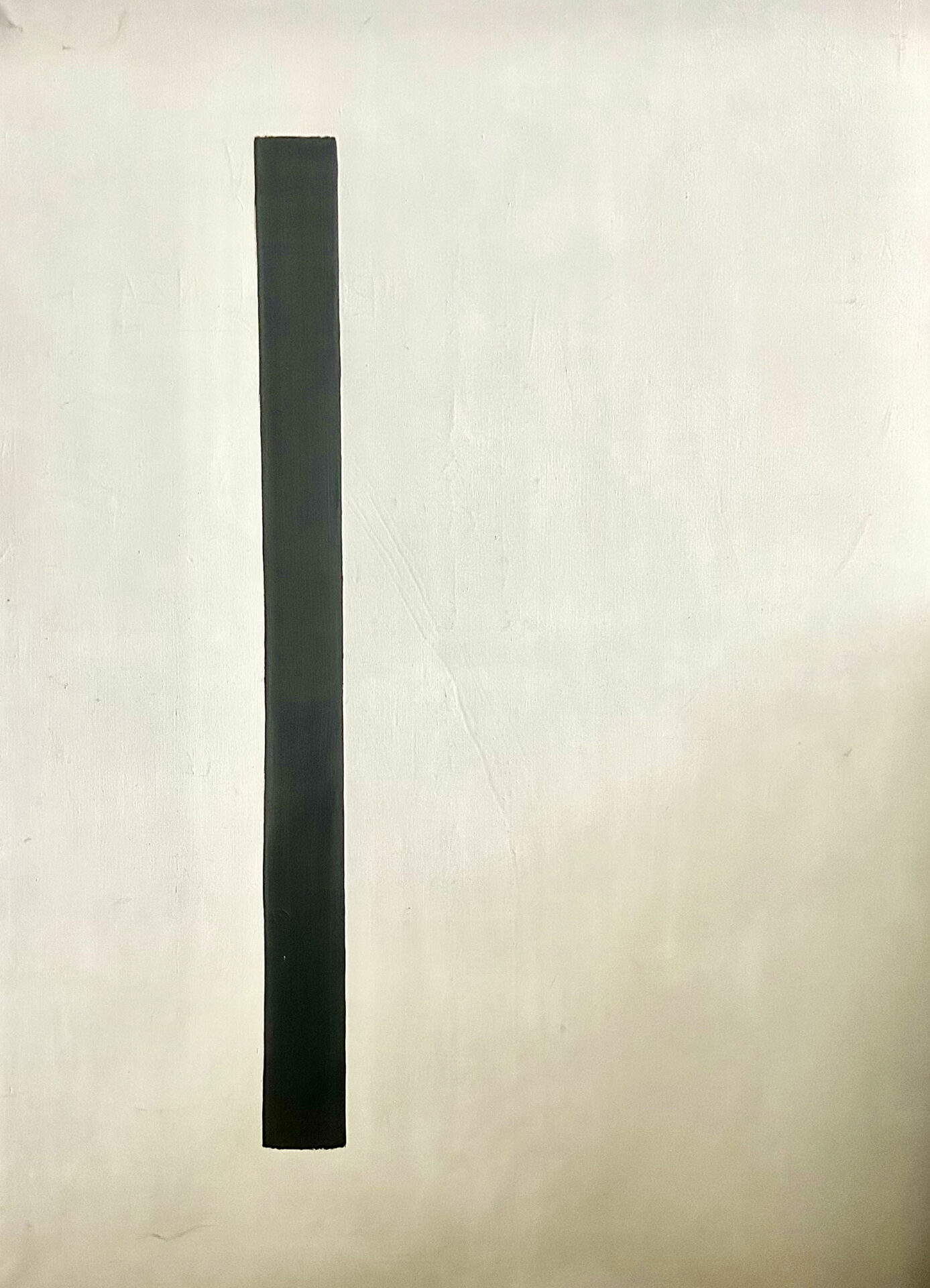
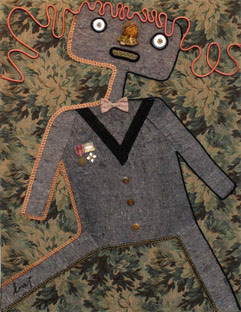
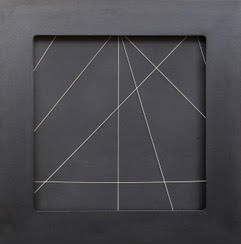
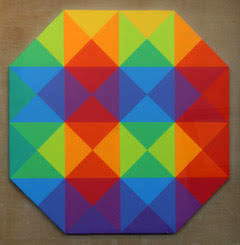
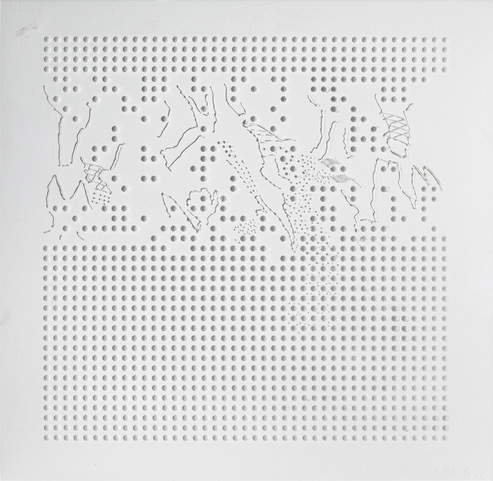
“It closes, with this last exhibition,” says Simona Piazza, Lecco City Councilor for Culture, “the exhibition cycle dedicated to the twentieth century promoted at Palazzo del Paure by ViDi cultural in collaboration with the City of Lecco. A long journey through the history of art, which again brings a great exhibition to the city, offering a valuable new opportunity to visit the Palazzo delle Paure, where one can also admire the new layout of the Gallery of Modern and Contemporary Art housed on the top floor. This series of ’major exhibitions’ has led to a growth in the number of visitors, both local and from outside the city or province, and has helped position Palazzo delle Paure among the places and museums capable of hosting major exhibitions. Thanks are due to the ViDi company, managing director Fabio Sanvito and curator Simona Bartolena, who so many times curated the exhibitions belonging to these exhibition cycles, as well as to the entire culture sector of the City of Lecco for their support.”
“The 1960s was an extraordinary decade for Milan,” explains curator Simona Bartolena. “A lively period, in which the Brera district was the scene of a constant sprouting of research, movements, situations open to the international context. Following in Fontana’s footsteps, a long series of artists ventured into territories all to be explored, between experimentation, perceptual investigations, performative actions, and the search for new expressive paths for painting. From the Spatialists to the Nuclearists, from Azimuth to Cenobio, up to the innovations of the T Group: a succession of rupture languages, of unquestionable modernity, still highly appreciated today. In a climate of growth and optimism, the 1960s brought a fundamental contribution to contemporary art. If for the previous exhibitions the gaze was open to all of Italy, in this last exhibition of the Lecco itinerary I felt the need to tighten the focus on Milan, one of the beating hearts of Italian culture at the time. While the Pop Art of the Scuola di Piazza del Popolo was growing in Rome and the Arte Povera experience was being born in Turin, Milan saw the spread of languages more driven on perception, conceptuality and minimal sign. In the exhibition an attempt has been made to recount also artists less known to the general public, but extraordinary for their innovative research, and to recall also fundamental places outside the Brera district, such as the exceptional experience of the Botteghe di Sesto. A book formerly owned by the then janitor of the Sesto San Giovanni building, with original sketches and drawings of all the artists where they had their ateliers there, will be on display to testify to this reality: an exciting object that brings us to the heart of a place that made history. Inevitably, the exhibition closes with a hint of the violent change of pace at the end of the decade. The Piazza Fontana bombing and all that followed weighed like a boulder on the city. The climate changes, the way of thinking about art changes, the need for a new social and political commitment is felt: we are now in the 1970s.”
The exhibition opens Tuesday from 10 a.m. to 2 p.m., Wednesday through Sunday from 10 a.m. to 6 p.m., closed Monday. The box office closes one hour early. Tickets: full 10 euros, reduced 8 euros (children 13 to 18 years old, over 65 years old, university students with a card, preconstituted groups of at least 8 people and up to a maximum of 20, FAI and TCI members with valid cards, 1 accompanying person for each Trenord season ticket holder), special reduced Trenord weekend and holidays 7 euros (for season ticket holders with Io Viaggio card), special reduced Trenord weekdays 6 euros (for season ticket holders with Io Viaggio card), schools and children from 6 to 12 years old 4 euros, free for disabled and one accompanying person, journalists with valid card, licensed tour guides, children up to 5 years of age, ICOM members with a valid card, Abbonamento Musei Lombardia members with a valid card, one accompanying group companion for every 15 people, teachers from Lecco schools of all levels.
 |
| Lecco, an exhibition explores 1960s Milan, from Fontana to Manzoni and beyond |
Warning: the translation into English of the original Italian article was created using automatic tools. We undertake to review all articles, but we do not guarantee the total absence of inaccuracies in the translation due to the program. You can find the original by clicking on the ITA button. If you find any mistake,please contact us.